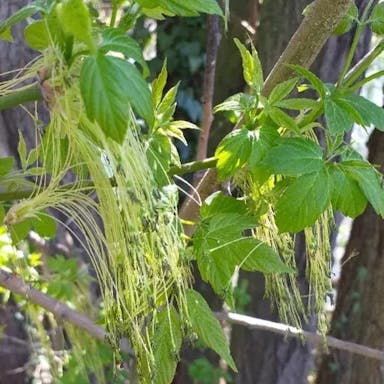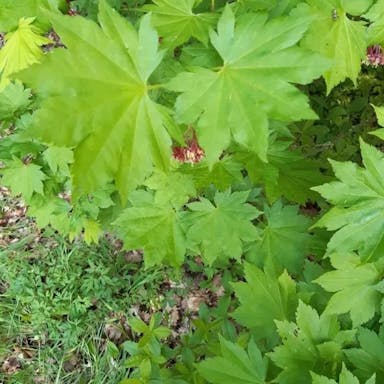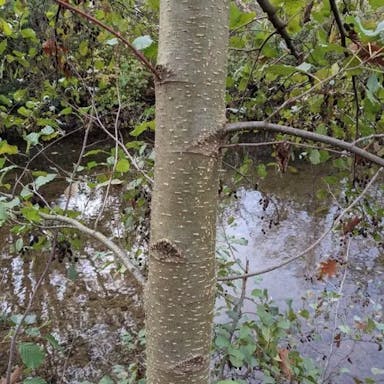European alder. scientifically known as Alnus glutinosa. is a deciduous tree that belongs to the Betulaceae family. It is native to Europe. where it is commonly found in wetland areas such as riverbanks and marshes. The tree can reach a height of up to 30 meters and has a shape with a crown. The flowers of Alnus glutinosa are small and inconspicuous. appearing in the form of catkins. The male catkins are in color. while the female catkins are green. The tree blooms in early spring. usually from February to April. The leaves of European alder are and oval-shaped with edges. They are sticky to the touch due to the presence of glandular hairs. The bark of the tree is when young. but becomes with age. The fruit of Alnus glutinosa is a small. cone-like structure called a strobile. Each strobile contains numerous tiny seeds that are dispersed by wind. European alder is relatively easy to grow and adapts well to various soil types. including wet and poorly drained soils. It is often used in projects due to its ability to tolerate wet conditions. In terms of symbolism. the alder tree is associated with protection. courage. and strength. It is also considered a symbol of balance and harmony in mythology. Overall. Alnus glutinosa is a versatile and resilient tree that plays an important ecological role in wetland ecosystems.
0
0












